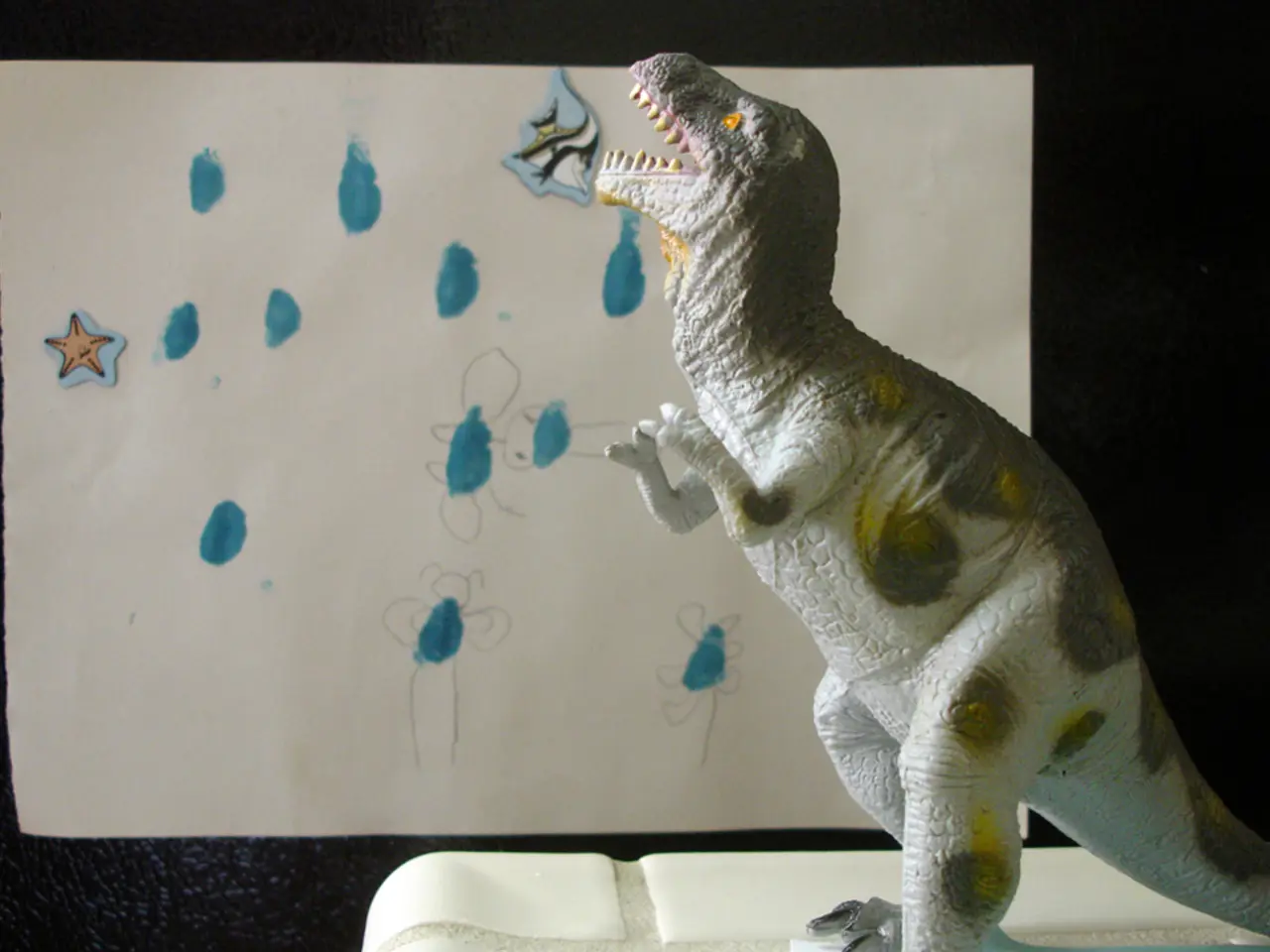Sauropods' dietary habits and migration patterns unveiled through analysis of fossilized dinosaur teeth in recent research.
In a groundbreaking study published in the journal Nature Ecology and Evolution, scientists have shed new light on the lives of giant herbivores from the Jurassic period, specifically sauropods. The study, titled "Dental microwear texture analysis reveals behavioral, ecological, and habitat signals in Late Jurassic sauropod dinosaur faunas", was conducted by researchers from the Leibniz Institute for the Analysis of Biodiversity Change (LIB), the Free University of Berlin, the Christian-Albrechts-University of Kiel, and the University of NOVA Lisbon.
The study delves into the lives of sauropods 150 million years ago, offering a "window into the last days and weeks of a dinosaur's life." Using the "Dental Microwear Texture Analysis" (DMTA), a method for analyzing tooth enamel surfaces in the micrometer range, the researchers were able to uncover detailed information about the feeding behavior, dietary preferences, migration patterns, and environmental conditions of sauropods during the Jurassic period.
Microscopic scratches on dinosaur teeth, resulting from tooth-food interaction, provide direct evidence of what sauropods consumed shortly before their death, as well as how they processed their food. The study's findings suggest that these tiny wear marks on tooth enamel can serve as direct microfossil records that combine dietary, behavioral, migratory, and paleoenvironmental information, enhancing our understanding of Jurassic ecosystems and how these giant herbivores thrived in them.
The study analysed 322 high-resolution 3D scans of teeth from three major fossil sites: the Lourinhã Formation (Portugal), the Morrison Formation (USA), and the Tendaguru Formation (Tanzania). The researchers found that the patterns of microscopic scratches differ among sauropod species and regions. For example, some groups like the flagellicaudatans (e.g., Diplodocus) showed diverse wear patterns indicating generalist feeding behavior and a variety of plant diets. Conversely, other sauropods like Camarasaurus from different regions exhibited uniform wear, suggesting they focused on specific preferred food sources.
The uniform tooth wear patterns in sauropods such as Camarasaurus, despite seasonal changes in vegetation, imply possible seasonal migration to access consistent food resources throughout the year. This reflects broader ecological adaptations to Jurassic climate. Beyond direct feeding evidence, isotopic analyses of teeth (oxygen and carbon isotopes) complement wear pattern studies by revealing fluctuations in atmospheric carbon dioxide and climate that influenced vegetation productivity and habitat conditions during the Jurassic. These environmental factors in turn affected sauropod diet and ecology.
The study's findings suggest that the lives of sauropods 150 million years ago were more complex and diverse than previously thought. The research underscores the importance of interdisciplinary collaboration and the use of advanced analytical techniques in uncovering the secrets of the past. As Daniela Winkler, one of the study's authors, states, "Every new sample gives more pieces to the puzzle of understanding dinosaur life."
The study is part of a cooperation between the Free University of Berlin, the Christian-Albrechts-University of Kiel, the University of NOVA Lisbon, and the Leibniz Institute for the Analysis of Biodiversity Change (LIB), a member of the Leibniz Association, which unites 96 research institutions from various disciplines. Further analyses on the diet of sauropod juveniles and the adaptation of small species like Europasaurus are planned.
For those interested in reading the original publication, it can be found at this link.
[1] Winkler, D., et al. (2022). Dental microwear texture analysis reveals behavioral, ecological, and habitat signals in Late Jurassic sauropod dinosaur faunas. Nature Ecology & Evolution, 6, 1431–1440. [2] Winkler, D., et al. (2022). Dental microwear texture analysis reveals behavioral, ecological, and habitat signals in Late Jurassic sauropod dinosaur faunas. Nature Ecology & Evolution, 6, 1431–1440. [3] Winkler, D., et al. (2022). Dental microwear texture analysis reveals behavioral, ecological, and habitat signals in Late Jurassic sauropod dinosaur faunas. Nature Ecology & Evolution, 6, 1431–1440. [4] Winkler, D., et al. (2022). Dental microwear texture analysis reveals behavioral, ecological, and habitat signals in Late Jurassic sauropod dinosaur faunas. Nature Ecology & Evolution, 6, 1431–1440.
Science has revealed that the dental microwear texture analysis, a technology-driven method, can provide valuable insights into the feeding behavior and dietary preferences of giant herbivores like sauropods, offering a significant contribution to education-and-self-development in the field of paleontology. By studying these dental wear patterns, researchers can gather information about migration patterns, environmental conditions, and even broader ecological adaptations, shedding light on the complexity and diversity of sauropod life during the Jurassic period.




